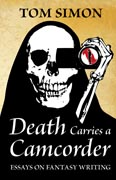A carol.
The kings of old wore purple and gold
while children in rags knew hunger and pain.
They sacrificed to idols of clay,
their blood and their labour they offered in vain.
A child is laid in a manger,
yet princes bow down and presents they bring:
Now sing, choirs of angels,
proclaim to the world the newborn King!
The kings of old in darkness and cold
abandoned all hope and thought themselves wise.
The children ask, ‘Is there nothing better?
If night is for ever, why do we have eyes?’
But a star shines in the darkness,
and green is the tree that promises spring.
Rejoice, all who sorrow:
a new life begins when Christ is King!
The kings of old, their people they sold,
enslaved them in lies, enchained them in sins,
despair and death in sad iteration—
Each generation ends as it begins.
A way leads out of the prison,
and Heaven’s bright gates are beckoning:
Hear, all ye nations,
and all shall be free in Christ the King!












Recent Comments